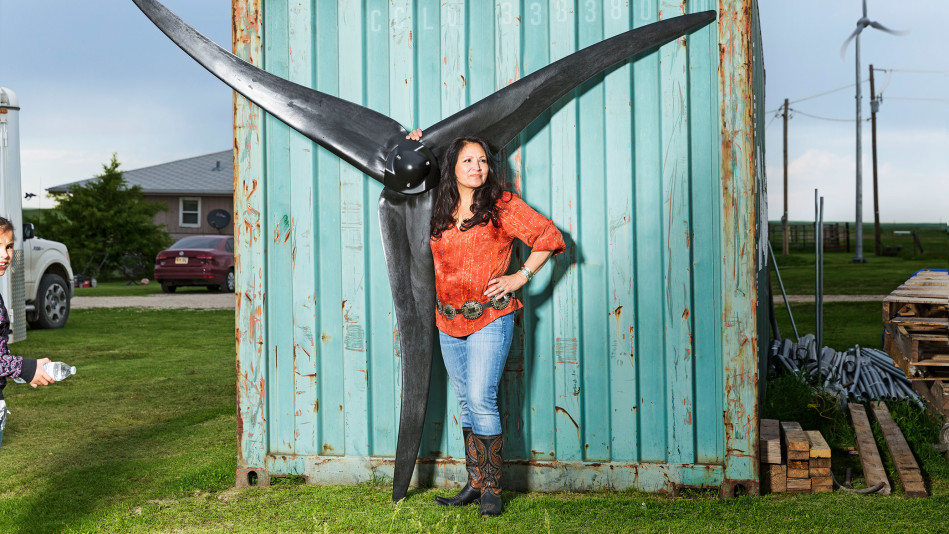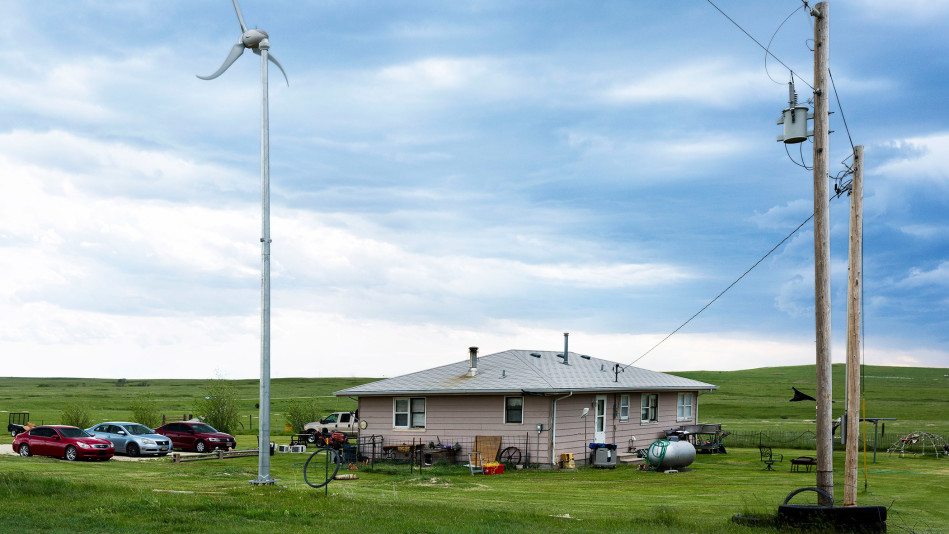This Woman Used Windpower to Throw a Lifeline to Her Community
An eco-minded advocate pulls a lifeline out of thin air.

Photo: Sam Comen
Above: Lakota tribe member Tamara Stands and Looks Back–Spotted Tail, who helped her community by harnessing the power of the wind.
Todd County, South Dakota, is home to expansive blue skies, brutal winters (think 20-below temps and snow six inches deep), and one of the highest poverty levels in the nation. When the 2008 economic crisis forced Lakota tribe member Tamara Stands and Looks Back–Spotted Tail to close her office-supply company in Albuquerque, she returned to the Rosebud Indian Reservation in Todd County, where she was born. In her community, people were struggling to afford their utilities, and the electric company was shutting off the heat when bills went unpaid. An elderly man whose wife depends on an electric-powered oxygen machine told her, "Every month I worry that I won't be able to afford to keep my wife alive." Stands and Looks Back–Spotted Tail prayed for an answer.
"The message I received was clear," she recalls. "If you don't do something to help your people, you're guilty of letting this happen." She was familiar with a Native American–owned renewable energy company called Sacred Power and, in 2009, asked for its help. Together, they secured a $395,000 grant from the U.S. Department of Agriculture to install 19 wind turbines on the reservation, thereby lowering energy costs without consuming limited resources.
 Photo: Sam Comen
Photo: Sam Comen
Today she continues to work as a tribal liaison for Sacred Power (in 2016, she secured a second $1.4 million grant from the USDA). "The wind is part of the Lakota people's creation story," she says. "Now we're asking the wind to help us."
Todd County, South Dakota, is home to expansive blue skies, brutal winters (think 20-below temps and snow six inches deep), and one of the highest poverty levels in the nation. When the 2008 economic crisis forced Lakota tribe member Tamara Stands and Looks Back–Spotted Tail to close her office-supply company in Albuquerque, she returned to the Rosebud Indian Reservation in Todd County, where she was born. In her community, people were struggling to afford their utilities, and the electric company was shutting off the heat when bills went unpaid. An elderly man whose wife depends on an electric-powered oxygen machine told her, "Every month I worry that I won't be able to afford to keep my wife alive." Stands and Looks Back–Spotted Tail prayed for an answer.
"The message I received was clear," she recalls. "If you don't do something to help your people, you're guilty of letting this happen." She was familiar with a Native American–owned renewable energy company called Sacred Power and, in 2009, asked for its help. Together, they secured a $395,000 grant from the U.S. Department of Agriculture to install 19 wind turbines on the reservation, thereby lowering energy costs without consuming limited resources.
 Photo: Sam Comen
Photo: Sam Comen
Today she continues to work as a tribal liaison for Sacred Power (in 2016, she secured a second $1.4 million grant from the USDA). "The wind is part of the Lakota people's creation story," she says. "Now we're asking the wind to help us."



